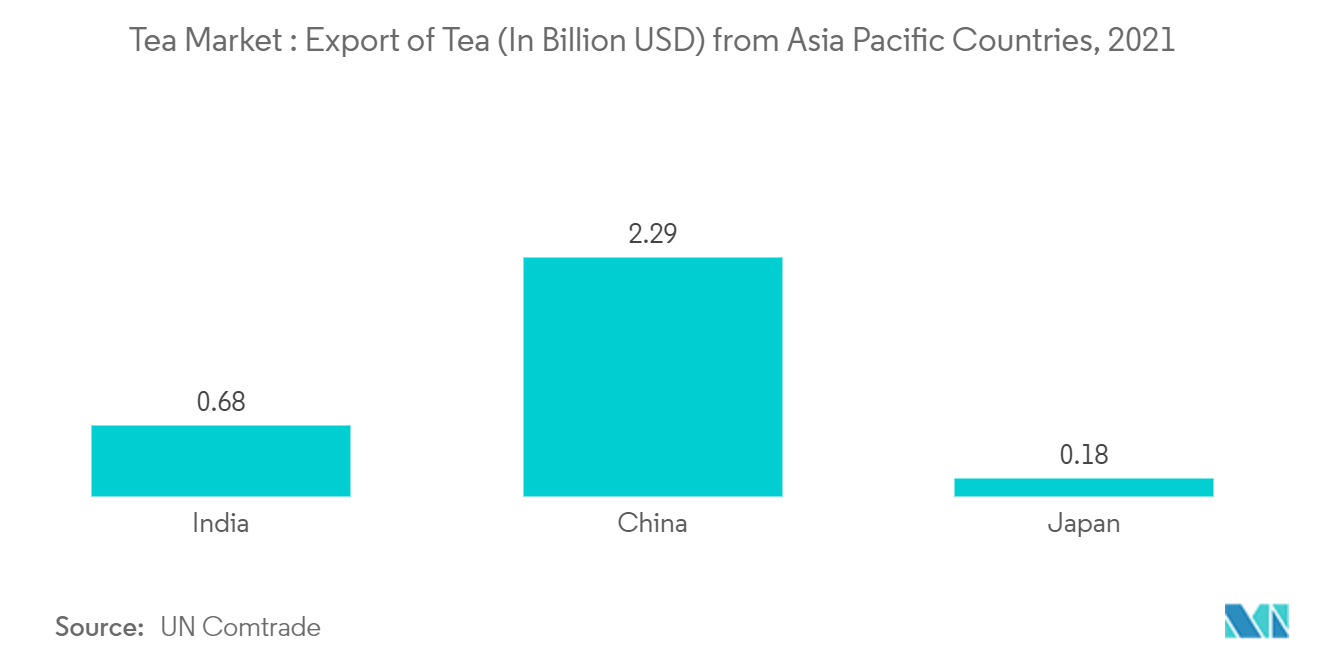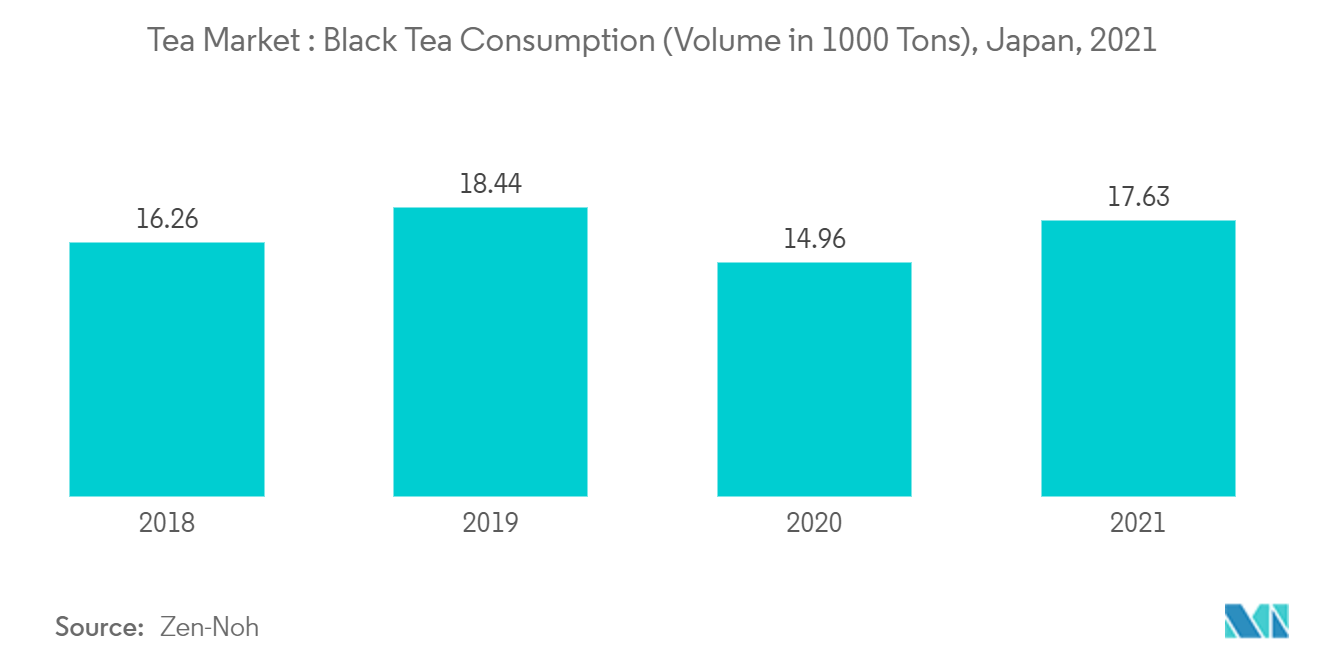Market Trends of Asia-Pacific Tea Industry
Increased Exports Of Tea From Asia-Pacific Region
There is a growing trend for health consciousness among people across the globe, encouraging consumers, particularly millennials to opt for tea instead of carbonated beverages. The increase in demand for tea is due to the health benefits of tea coupled with enhanced awareness of the herbal ingredients present in it. Countries like China and India being the top producers of tea were able to meet the growing demand by exporting tea across the world. According to the Food and Agriculture Organization (FAO), China remains by far the largest tea producer, accounting for 47% of global output, reaching 3.1 million tonnes in 2021, compared to 2.9 million tonnes in 2020. Output in the second largest producer, India, recovered in 2021 to 1.33 million tonnes compared to 1.26 million tonnes in 2020.
In 2021, according to Food and Agriculture Organisation, Exports recovered slightly from the COVID-19-related downturn in 2020 to an estimated 1.8 million tonnes in 2021, owing to higher exports by Kenya and China, and resumed shipments from Sri Lanka, the second largest black tea exporter. Other major tea exporters included Sri Lanka and Kenya that year. Moreover, according to (The Food and Agriculture Organization) FAO, world tea consumption increased by 3.5% over the last decade, reflecting strong growth in producing countries that has more than offset a subdued import demand in traditional tea importing markets, namely the Russian Federation, the European Union, the United States of America and Canada. With more consumers preferring tea in the coming years, the tea market is expected to grow further during the coming years.

Black Tea is the Fastest Growing Segment
China, the world's top producer and the largest consumer of green tea is now exploring black tea from India, Srilanka, and China. Black tea is associated with many health benefits - it contains polyphenols which act as antioxidants that help in preventing the DNA damage caused by tobacco or other toxic chemicals. With a rise in health awareness and growing western influence, young Chinese and Japanese prefer black tea. The United Nations Food and Agriculture Organization (FAO) believes that global black tea production will grow by 2.1%, with China leading the charge in the coming years. According to IBEF (India Brand Equity Foundation), India is among the top 5 tea exporters in the world making about 10% of the total exports. In the year 2021, the total value of tea exports from India was around USD 687.9 million. The majority of the tea exported out of India is black tea makes up about 96% of the total exports. The demand for black tea is poised to grow at a faster rate due to growing consumer interest and increasing health awareness pertaining to tea consumption. Many manufacturers are offering black tea with the claims of anti-aging and other health benefits.
For instance, in September 2021, Amorepacific-owned South Korean brand Innisfree launched a new anti-aging line. It is called the Black Tea Youth Enhancing, in Singapore, following success in its home market (South Korea). The tea is claimed to be for millenials anti aging. All these factors related to health benefits of black tea are attracting consumers to buy black tea more often than other kinds of tea.


